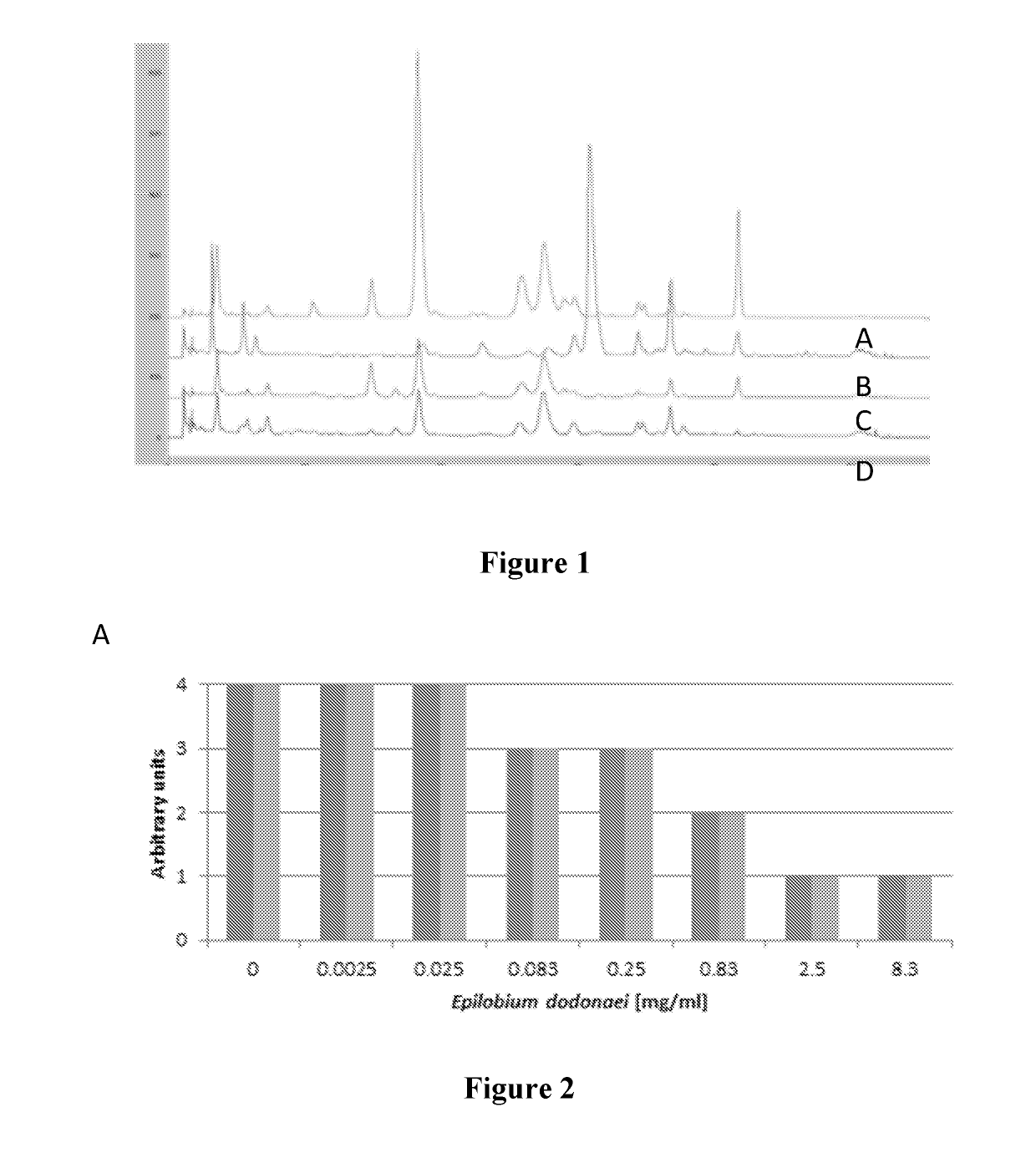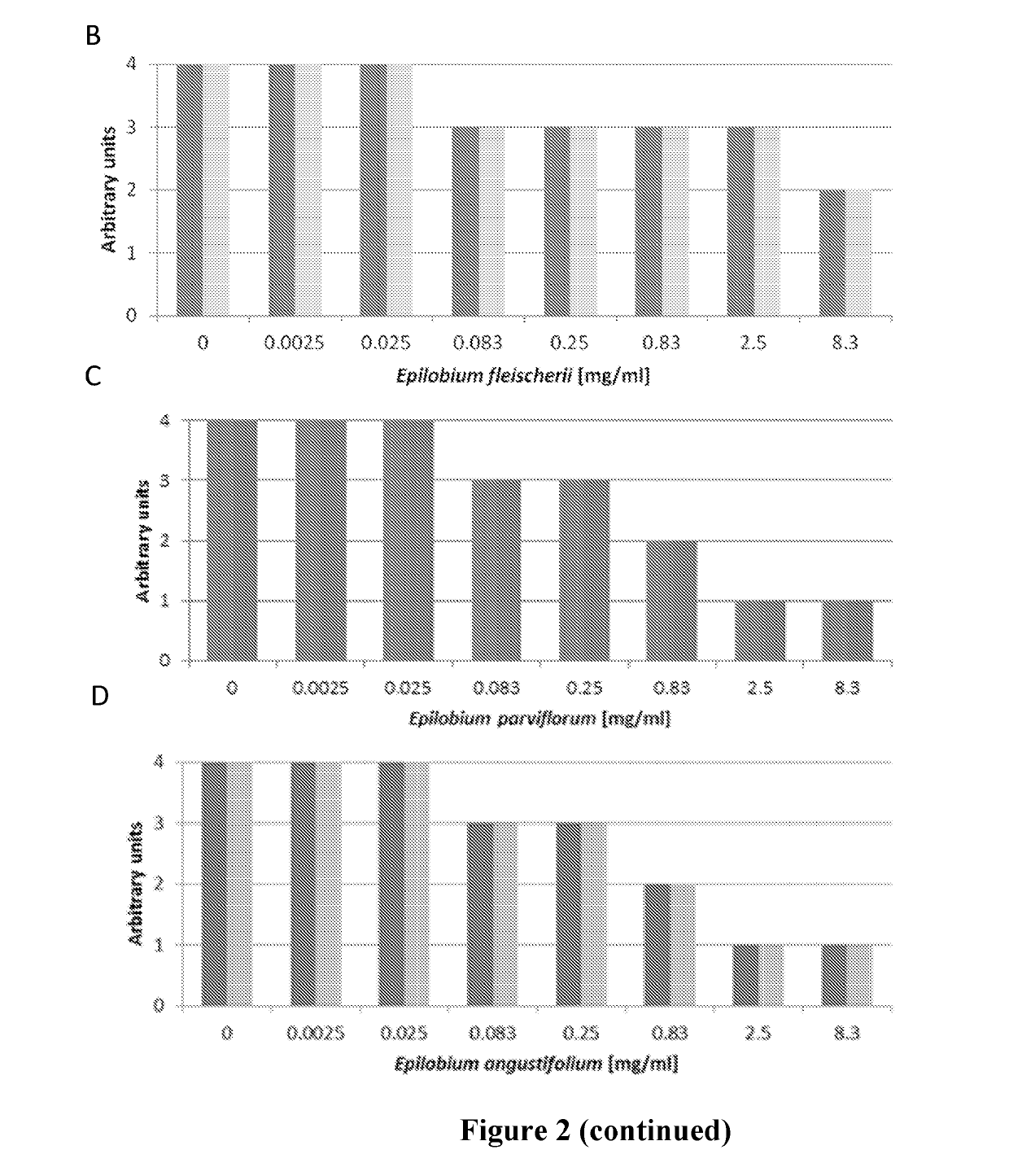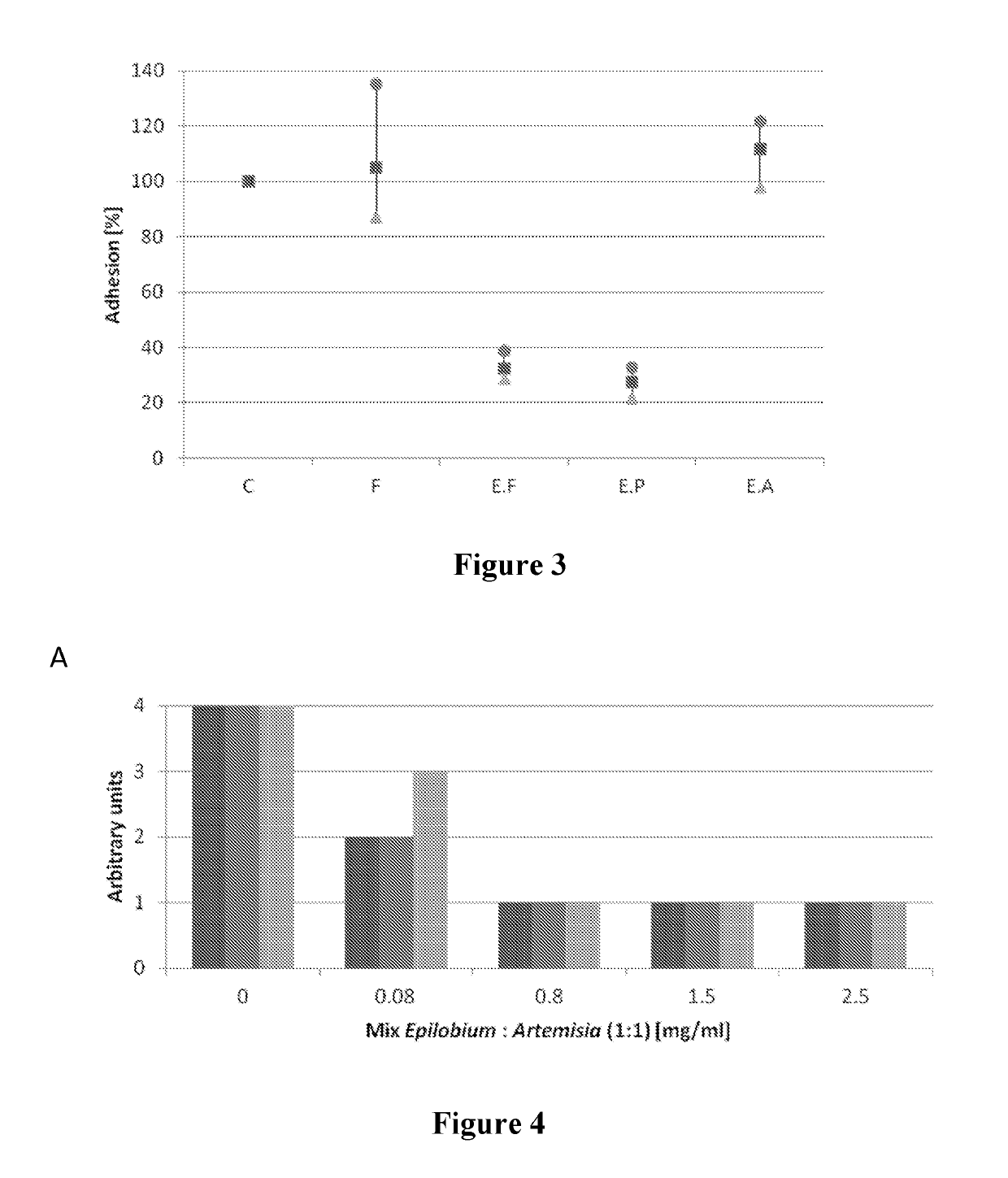Anti-candida compositions and uses thereof
a composition and composition technology, applied in the field of prevention or treatment of candida infections, can solve the problems of oral candidiasis, difficult treatment, and irritation of the vaginal lining, and achieve the effects of inhibiting growth, weak stability, and inhibiting candida growth
- Summary
- Abstract
- Description
- Claims
- Application Information
AI Technical Summary
Benefits of technology
Problems solved by technology
Method used
Image
Examples
example 1
Compared Activities Between Different Epilobium Species and Between Different Methods of Extraction
[0103]Different plant extracts from the Epilobium sp. were compared in view of their inhibitory activity on C. albicans growth and adhesion.
Plant Extraction
[0104]Plant extraction was run on the four species Epilobium parviflorum, E. angustifolium, E. fleischeri and E. dodonaei (syn. E. rosmarinifolium). Powders were extracted following one of the following procedures:
[0105]a) Extraction in Water (at 100 Bars, 80° C.)
[0106]The dried aerial parts are milled with an ultracentrifugal mill (Retsch ZM100) with 1 mm Conidur sieve. Plant material was extracted by accelerated solvent extraction (ASE), with demineralized water (80° C., 1 extraction cycle of 5 minutes). The extract was precipitated with L-lactic acid PhEur (Fluka Analytical, 69775) (mass ratio crude extract ratio to acid lactic of 150:1). The mixture is cooled at 4° C. for 24 hours and then centrifuged at 1500 rpm during 10 minut...
example 2
Effects of Combinations of Epilobium parviflorum Extracts and Artemisia annua Extracts
[0127]The effects of a mixture of Epilobium parviflorum and Artemisia annua extracts on Candida albicans adhesion were tested as follows:
Plant Extraction
[0128]The dried aerial parts of Artemisia annua and Epilobium parviflorum were milled separately with an ultracentrifugal mill (Retsch ZM100) with 1 mm Conidur sieve. They were mixed homogeneously together to a mass ratio of 1:1. The mixture was extracted by accelerated solvent extraction (ASE) following the procedure described in Example 1.
[0129]Samples of A. annua and E. parviflorum extracts were prepared according to the pharmacopoeia (European Pharmacopoeia 7.0, chap. 2.8.14). Only the step of the treatment with skin hide (FILK GmbH, Freiberg, Germany, 350 400) and the filtration step is performed. The obtained filtrate is standardized following the procedure described in Example 1. A monitoring by HPLC-DAD showed that molecules eluting between...
example 3
Compared Activities of Epilobium parviflorum Extracts Obtained by Different Methods
[0142]Epilobium parviflorum extracts obtained by different processes were tested for their ability to inhibit adhesion of Candida albicans to human epithelial cells as described in Example 2 at 5 mg / ml.
Extraction in Ethanol 30% (100 Bars, 40° C.) (Extract 1)
[0143]This extraction method was used as described in Example 1.
[0144]Extraction in Water 100% (100 Bars, 80° C.) with Precipitation with Lactic Acid at 4° C. and Stabilization with Glycerol (Extract 2)
[0145]This extraction method was used as described in Example 1. The supernatant (sng), the sediment (solid) and the whole extracts were all tested.
Extraction in Ethanol (EtOH, 98% at 100 Bars, 40° C.) (Extract 3)
[0146]This extraction method was used as described in Example 5.
[0147]Results are presented in Table 3 below as compared to Pepstatine A (Carl Roth 2936, Germany) (at 1 μM) which is a known inhibitor for adhesion inhibiting aspartic protease...
PUM
 Login to View More
Login to View More Abstract
Description
Claims
Application Information
 Login to View More
Login to View More - R&D Engineer
- R&D Manager
- IP Professional
- Industry Leading Data Capabilities
- Powerful AI technology
- Patent DNA Extraction
Browse by: Latest US Patents, China's latest patents, Technical Efficacy Thesaurus, Application Domain, Technology Topic, Popular Technical Reports.
© 2024 PatSnap. All rights reserved.Legal|Privacy policy|Modern Slavery Act Transparency Statement|Sitemap|About US| Contact US: help@patsnap.com










